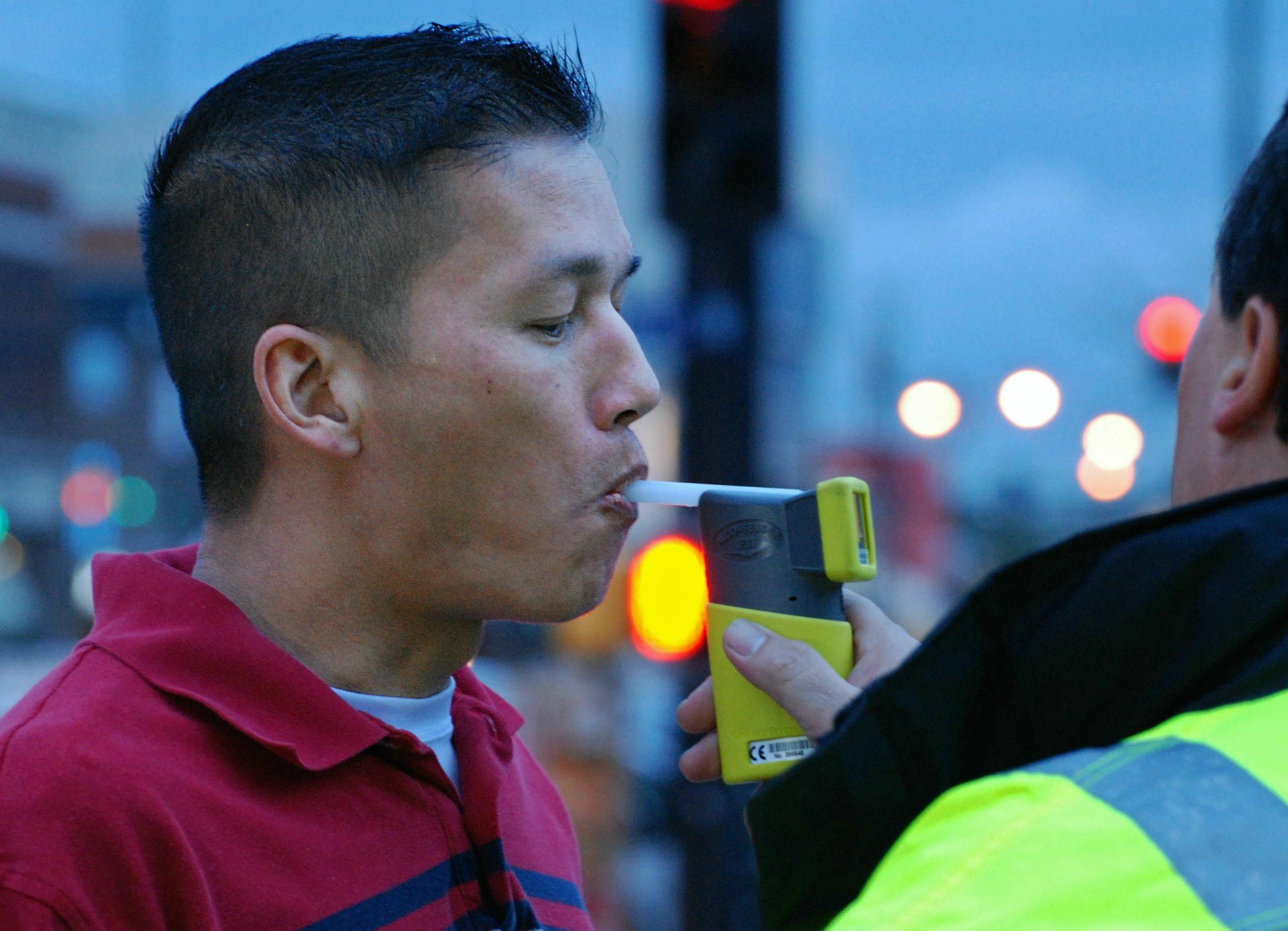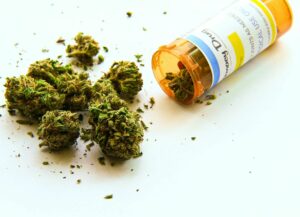Breathalyzer testing is a common—and legal—way to find out whether someone’s driving under the influence of alcohol. But can the same concept work for cannabis, too? Hound Labs thinks that it can.
The Oakland-based laboratory has developed the first-ever breathalyzer to test for the presence of tetrahydrocannabinol (THC), the psychoactive ingredient in marijuana. But because of the way THC and other compounds in cannabis are metabolized by the body, breath testing may not be a reliable way to find out whether a driver who has consumed cannabis is actually impaired.
FOLLOW US ON FACEBOOK & INSTAGRAM
Hound Labs Attempts to Define Cannabis Impairment
Acceptance of legal marijuana in some form is growing across the U.S.—and so too are concerns that vehicle accident rates will go up as more drivers hit the road after consuming cannabis. So, the search is on for a fast and reliable way to test for the presence of cannabis in a person suspected of driving while impaired—and to establish a baseline level for defining impairment.
To do that, researchers at Hound Labs and elsewhere have looked to the model of the breathalyzer, a tool used in thousands if not millions of traffic stops to check whether a person’s blood-alcohol level is over a clearly specified amount. Using that same principle, the Hound Labs Breathalyzer aims to detect the presence of THC in terms of nanograms per milliliter (ng/mL) in the breath.
RELATED: KEEPING CANNABIS IN YOUR CAR: FIND OUT WHAT’S LEGAL
After field-testing the breathalyzer prototype on large numbers of volunteer motorists, the Hound Labs researchers hope to establish a legal national standard for defining cannabis impairment, which in some states is already set at 5 ng/mL. But it’s possible for someone to be impaired by THC at much lower levels than that—or not impaired at all at much higher levels.
How Do Breathalyzers Measure Alcohol?
Alcohol is carried into the bloodstream after reaching the stomach and small intestine, then it goes on to the liver where it’s broken down. And it’s pretty standard how quickly a person’s liver can break down alcohol—generally one ounce of alcohol an hour. Of course, everybody’s different, but because this process is relatively straightforward, this baseline is a pretty reliable standard.
Alcohol in the blood that goes through the lungs evaporates into the lung’s air sacs and then into the air, showing up when someone who’s been drinking breathes into a breathalyzer. It’s not as accurate as a blood test, but it’s enough to determine if someone is impaired.
Cannabis & Alcohol Work Very Differently in the Body
Unlike alcohol, where its presence at a certain level nearly always equates to impairment, the presence of cannabis at a given level doesn’t necessarily correlate to impairment. And that creates a conundrum for proponents of breathalyzer testing—how can the test tell police that the person being tested is impaired by marijuana, as opposed to simply having consumed cannabis? Because that’s all the marijuana breathalyzer can tell us: whether there’s cannabis present in the body. It can’t determine if a person is impaired enough to be dangerous on the road.
Applying the same standards for alcohol to that of cannabis impairment is highly problematic, given that cannabis behaves very differently in the body than alcohol or other substances that typically cause obvious impairment at certain levels. The mechanisms for the uptake and expression of cannabis are complex and highly variable, depending on factors such as:
- Gender
- Weight
- The makeup of an individual’s endocannabinoid system (ECS)
- Consumption method
The different ways of consuming cannabis—smoking, vaping, eating edibles—can produce very different effects. This also contributes to the range of responses to a given amount of cannabis.
THC’s Many Forms Make Detection Standards Difficult
Cannabis contains many compounds, and research continues to discover more. But it’s the famous delta-9 tetrahydrocannabinol, or THC, that people focus on and that makes some worry about the dangers of drug addiction. Those reactions arise from the fact that THC is responsible for the high people feel after consuming marijuana, as well as other responses in a number of areas of the brain related to memory, coordination and mood. But how long people feel altered and what effects it can have aren’t so easy to define given what happens to THC once it’s consumed.
When most people refer to THC, they’re almost always referring to delta-9 THC. This chemical converts to other forms, or metabolites, once it enters the body. When cannabis is inhaled, THC quickly enters the lungs. From there it enters the bloodstream, travelling directly to the heart, where it’s pumped throughout the body. On the way through the liver, it converts into a secondary metabolite called 11-hydroxy-delta-9-THC, or hydroxy THC. In turn, hydroxy THC creates a third form, 11-Nor-9-carboxy-THC, often called THC-COOH, or carboxy THC.
All of these forms of THC operate differently in the body, so that their effects aren’t felt simultaneously. Delta-9 THC peaks in the bloodstream within about 10 minutes of smoking or vaping. About 15 minutes after inhaling, hydroxy THC crosses the blood-brain barrier, triggering ECS receptors there to cause the well-known marijuana high. Because both hydroxy and carboxy THC are produced by secondary processes, they linger in the system—and this plays a major role in figuring out when, and how, a person is affected by cannabis.
Although hydroxy THC peaks within minutes after consumption, it can be detected in the body for at least 12 hours after that. But carboxy THC, the last of the THC metabolites to be produced, typically peaks more than an hour after it’s consumed—and it can be detected for up to seven days after use.
Further complicating this picture is the fact that THC in all its forms has an affinity for lipid, or fatty tissue, where it can remain for relatively long periods of time before being slowly released back into the bloodstream and eventually excreted. Frequent marijuana consumers and people with higher amounts of adipose tissue retain THC longer and in higher amounts. That explains why it’s possible to test positive for THC on a urine drug test days or weeks after having consumed cannabis.
Different Cannabis Consumption Methods Affect Bodies Differently
How much someone is affected by cannabis and for how long depends on how they consumed the marijuana in the first place. Ingesting cannabis in the form of edibles considerably slows down the journey of THC through the body, since it has to enter the bloodstream via the stomach and intestines. That explains why most people don’t feel the effects of cannabis edibles until an hour or more after consuming them.
The THC eventually winds up in the liver, where it’s broken down into its various metabolites and released back into the bloodstream. In this first pass through the liver, relatively large amounts of THC are typically metabolized or eliminated completely before reaching the ECS receptors at all. But the remaining delta-9 and hydroxy THC reach the brain almost simultaneously, binding to the CB1 receptor there.
All of these processes are affected by factors including sex (men and women may metabolize cannabis differently because of variations in adipose tissue levels, among other factors), weight and the distribution of ECS receptors throughout the body. These receptors can range from high to low density and vary in their responsiveness to cannabis.
While Hound Labs claims its test can differentiate between cannabis consumed long ago and marijuana ingested just shortly before the test, it’s still problematic. What if someone ingested a cannabis edible but the effects haven’t been felt yet, and they’re not impaired? A Hound Labs breathalyzer would still register a positive test.
So, Is Breath Testing for Marijuana Really a Good Option?
All of these factors combine to explain why cannabis behaves so differently from alcohol in the body, and why the same breathalyzer technology may not work for detecting both of these substances. For now, Hounds Lab and some of its competitors continue to fine-tune their products and work on the challenge of defining impairment from cannabis.
Driving while under the influence of substances of any kind is illegal nationwide—and that includes cannabis. But the disconnect between consuming marijuana and being impaired by cannabis makes it difficult to create meaningful tools and metrics for defining a cannabis DUI. Plus, statistics reveal that vehicle accidents due to cannabis consumption haven’t risen as people feared. Some research suggests that the opposite might actually be true: Cannabis-consuming drivers may be more cautious than their peers who drive under the influence of alcohol—the latter of which are responsible for a significant number of car crashes.
For now, Hound Labs is working to solve the problem of not having a way to test drivers for marijuana impairment. But until then, if you consume cannabis, you’re better off having a designated driver get behind the wheel.
Photo credit: KOMUnews
If you’re new to cannabis and want to learn more, take a look at our Cannabis 101 post. HelloMD can help you get your medical marijuana recommendation; it’s easy, private and 100% online.






